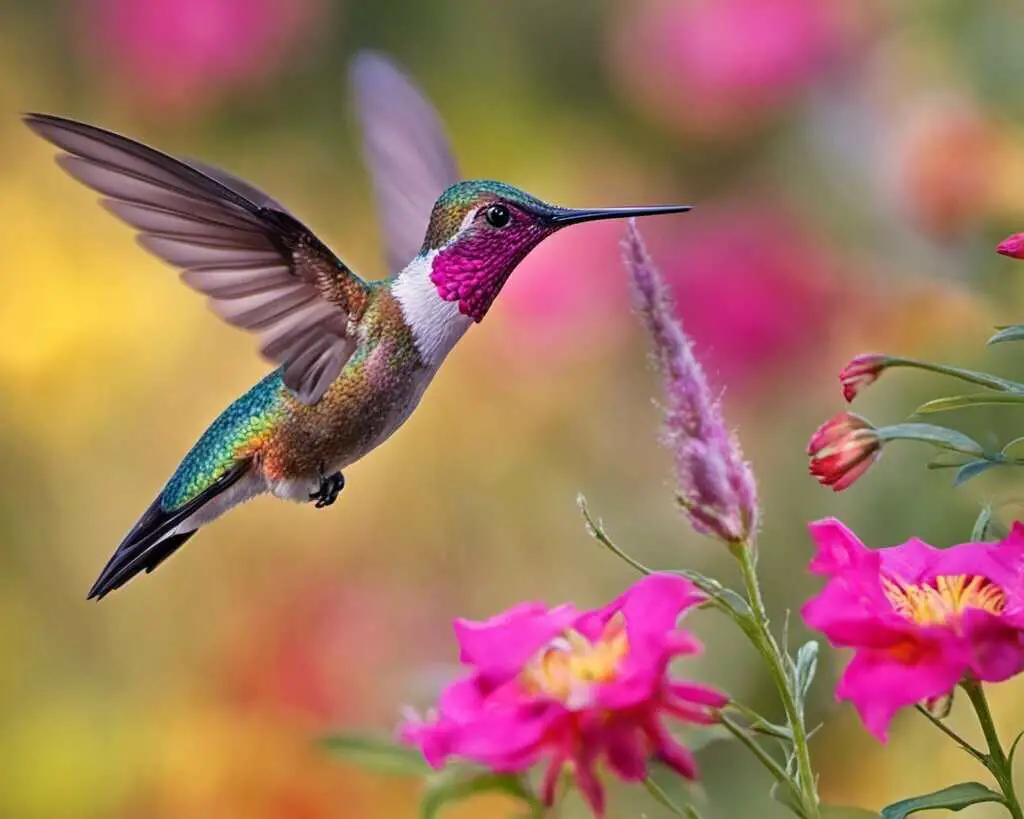Hummingbirds are some of the most fascinating birds in the world. These tiny creatures are renowned for their striking colors, incredible speed, and unique behavior. But did you know that hummingbirds also undertake some of the most impressive journeys in the animal kingdom? In this article, we will explore the migration patterns of hummingbirds in the United States, diving into their fascinating journey across the country.
Table of Contents
- 1 Key Takeaways
- 2 Do Hummingbirds Migrate?
- 3 Understanding Hummingbird Migration
- 4 When Do Hummingbirds Migrate?
- 5 The Why Behind Hummingbird Migration
- 6 The Distance Traveled by Hummingbirds
- 7 Do All Hummingbirds Migrate?
- 8 Ruby-Throated Hummingbirds and Migration
- 9 Mapping the Hummingbird Migration Routes
- 10 The Season of Hummingbird Migration
- 11 The Impact of Migration on Hummingbirds
- 12 Uncovering the Wonders of Hummingbird Migration
- 13 FAQs: Do Hummingbirds Migrate?
- 13.1 What triggers hummingbird migration patterns?
- 13.2 When do hummingbirds migrate?
- 13.3 Why do hummingbirds migrate?
- 13.4 How far do hummingbirds migrate?
- 13.5 Do all hummingbirds migrate?
- 13.6 Do ruby-throated hummingbirds migrate?
- 13.7 How are hummingbird migration routes mapped?
- 13.8 What is the hummingbird migration season?
- 13.9 What is the impact of migration on hummingbirds?
- 13.10 Why should we appreciate hummingbird migration?
- 14 Author
Key Takeaways
- Hummingbirds are known for their impressive migration journeys across the United States.
- These tiny birds cover significant distances during migration, traveling for food, breeding, and survival.
- Hummingbird migration is not a one-time event but occurs over a span of months, passing through different regions of the country.
- Understanding hummingbird migration is crucial to appreciating the incredible capabilities of these birds and working towards their conservation.
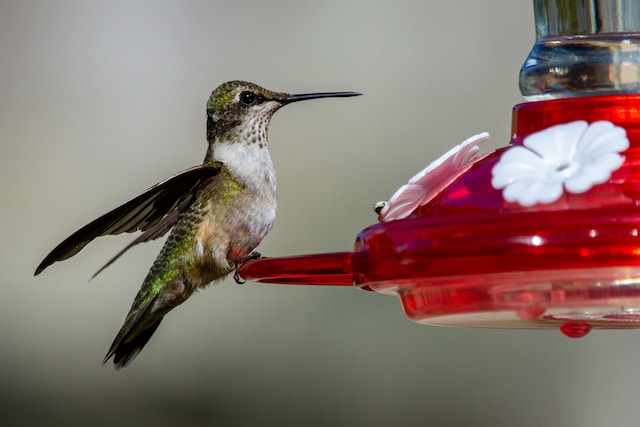
Do Hummingbirds Migrate?
Yes, hummingbirds do migrate! While some species of hummingbirds are year-round residents in certain areas, many species undertake long-distance migrations each year. Some hummingbirds travel thousands of miles from their breeding grounds in North America to their wintering grounds in Central and South America.
These migrations are often timed with the changing seasons and availability of food sources along the way. Hummingbirds are known for their impressive endurance and ability to fly long distances without stopping, fueled by their high metabolism and sugar-rich diet of nectar and insects.
Understanding Hummingbird Migration
Hummingbirds are unique among bird species, not just for their vibrant colors and rapid wingbeats but also for their incredible migration patterns. Migration is the regular seasonal movement of animals from one geographical location to another. Birds undertake migration to find better food, breeding grounds, and more hospitable climates.
Hummingbird migration patterns are fascinating to study as these tiny birds cover impressive distances during their annual journeys. Despite their small size, hummingbirds travel incredible distances that would put most animals to shame. Understanding the factors that trigger hummingbird migration patterns can help us appreciate the impressive instincts that guide these birds on their long and arduous migrations.
What is Migration?
Migration is a regular pattern of movement undertaken by animals in response to changing environmental conditions, including those related to resource availability, such as food and water, or breeding grounds. But migration is not unique to birds; many other species, including mammals, fish, insects, and even some reptiles, undertake seasonal journeys as well.
The movement patterns of animals can vary from short, localized movements to long-distance seasonal migrations spanning thousands of miles. Some species migrate alone, while others move in large flocks or herds. For birds, migration is triggered by seasonal changes in temperature, daylight hours, and food availability.
Factors That Trigger Hummingbird Migration Patterns
Many factors trigger hummingbird migration patterns. One of the biggest influences on migration is food availability. Hummingbirds primarily feed on flower nectar, which is abundant in the spring and summer months but scarce in the winter. As temperatures drop and food becomes scarce, hummingbirds are triggered to migrate in search of better feeding grounds.
Another factor that triggers hummingbird migration patterns is the change in day length. As the days become shorter during the fall months, hummingbirds instinctively know it’s time to start their annual journey. The shorter days signal the birds to begin building up their energy reserves for their long migration.
The availability of suitable breeding grounds is another factor that triggers hummingbird migration patterns. Hummingbirds breed during the spring and summer months, and they need to migrate to areas that offer suitable breeding habitats with plenty of food and nesting sites.
Understanding these factors that trigger hummingbird migration patterns can help us appreciate the incredible instincts that guide these birds on their long and arduous migrations.
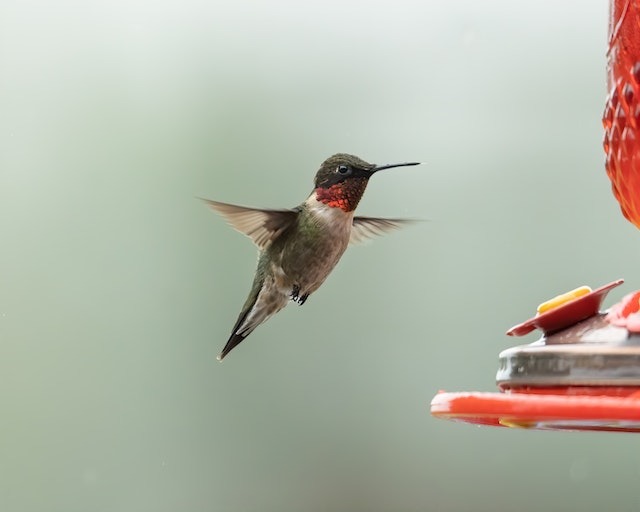
When Do Hummingbirds Migrate?
Hummingbirds are remarkable birds that undertake an annual migration across the United States. The timing of their migration is critical to their survival, and it varies depending on the species and region.
In general, hummingbirds migrate twice a year, once in the spring and again in the fall. The northern region of the United States sees hummingbirds arrive in late April to early May, while the southern region experiences their arrival in late February to early March. The departure times vary based on the region and are influenced by environmental factors such as temperature and food availability.
The ruby-throated hummingbird, for example, begins its migration south in late August to early September, departing from the northern and eastern regions of the United States. The western hummingbird species, on the other hand, start their journey south in early fall, around mid-September.
The duration of the migration varies depending on the species, with some hummingbirds traveling as far as 3,000 miles each way. The entire migration journey can take several months, depending on the distance and the number of stops needed for rest and food.
To increase your chances of spotting hummingbirds during migration, it is essential to know when they are expected in your region. You can consult birdwatching guides or tracking tools to stay informed of their movements.
Factors That Influence Migration Timing
Several factors trigger hummingbird migration patterns, including seasonal changes, temperature, availability of food, daylight hours, and breeding cycles. These factors trigger a physiological response in the birds that prepares them for their long journey.
Longer daylight hours signal to the birds that it is time to start their migration journey. As the days shorten, the birds become restless and prepare for their journey south. The availability of food also plays a critical role, and hummingbirds start their journey when food becomes scarce in their current location.
Temperature also influences migration timing, with hummingbirds avoiding extreme weather conditions such as storms or strong winds. Breeders also time their migration to coincide with the breeding season, ensuring they arrive at their breeding grounds at the right time.
In conclusion, the timing of hummingbird migration is essential to their survival, and understanding when they are expected in your region can help you appreciate these fascinating birds’ journey fully. Keep track of their movements to increase your chances of spotting these tiny birds during their migration period.
The Why Behind Hummingbird Migration
Hummingbirds are fascinating creatures that embark on long journeys during their annual migration. But what drives these tiny birds to undertake such arduous journeys each year?
The search for suitable breeding grounds is one of the main reasons why hummingbirds migrate. As the seasons change, hummingbirds move to regions where they can find suitable habitats for breeding and raising their young.
Food availability is another critical factor that influences hummingbird migration patterns. These birds rely on nectar as their primary source of food, and they move to regions where they can find an abundance of flowering plants.
Finally, changes in environmental conditions can also trigger hummingbird migration. As temperatures drop, these birds move to warmer regions to avoid harsh weather conditions that can threaten their survival. Similarly, changes in humidity and rainfall patterns can also influence their movements.
The Instincts That Guide Hummingbird Migration
Despite their small size, hummingbirds possess remarkable instincts that guide them on their migratory journeys. These instincts are linked to a variety of cues, such as changes in daylight hours and magnetic fields.
For example, hummingbirds use the position of the sun to navigate during the day, and they rely on the stars at night. They also possess a remarkable ability to sense changes in the earth’s magnetic fields, which they use to orient themselves during their journeys.
Overall, hummingbird migration is a complex and vital process that helps ensure the survival of these incredible birds. By understanding the reasons behind their migrations, we can better appreciate their remarkable capabilities and work towards preserving their habitats and populations for future generations.
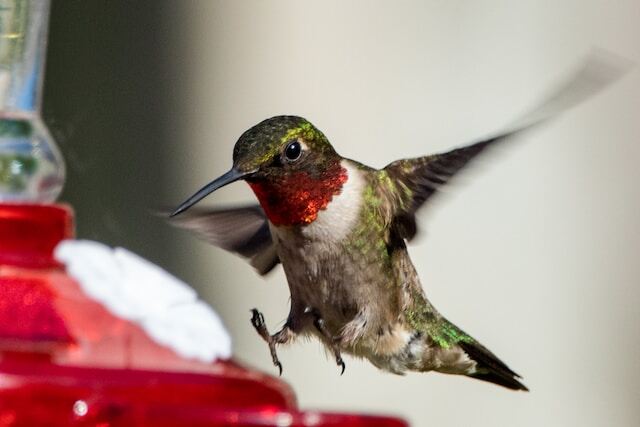
The Distance Traveled by Hummingbirds
Despite their small size, hummingbirds are capable of covering impressive distances during migration. On average, these birds travel around 500 miles when making their annual journeys across the United States.
However, some hummingbird species are known to travel even further. The Rufous hummingbird, for example, travels over 3,000 miles from its breeding grounds in Alaska to its wintering grounds in Mexico and Central America. This makes it one of the longest migratory journeys of any bird in the world.
The Ruby-throated hummingbird, which is found in the eastern part of the United States, travels around 2,000 miles from its breeding grounds in Canada and the eastern U.S. to its wintering grounds in Mexico and Central America.
The distance traveled by hummingbirds is truly remarkable, considering their small size and the challenges they face during their journeys.
The Challenges of Migration
Migration is a difficult journey for any bird, and hummingbirds are no exception. These tiny birds must navigate vast distances, often facing adverse weather conditions and a lack of suitable food and water sources along the way.
During migration, hummingbirds must rely on their fat reserves to fuel their bodies, as they often fly non-stop for long periods of time. This can make them vulnerable to predators and other threats, particularly when crossing large bodies of water.
Despite these challenges, hummingbirds continue to make their impressive journeys year after year, driven by their incredible instincts and determination.
Do All Hummingbirds Migrate?
While many hummingbird species embark on long-distance migration journeys, some do not migrate at all. In fact, there are about 338 known species of hummingbirds, and their migration patterns vary greatly.
Of the hummingbirds found in the United States, only a few undertake migration journeys. These include the Rufous Hummingbird, the Black-chinned Hummingbird, the Calliope Hummingbird, and the Ruby-throated Hummingbird.
The Anna’s Hummingbird is a notable example of a species that exhibits more localized movements and does not migrate long distances. They may move to different locations within their range to find better food sources or breeding grounds.
Hummingbirds that do migrate often travel extraordinary distances, crossing entire countries and continents to reach their final destination. The Ruby-throated Hummingbird, for instance, flies over 1,500 miles across the Gulf of Mexico to reach its wintering grounds in Central America.
The reasons why some hummingbirds migrate while others remain sedentary are still not fully understood by scientists. However, it is believed that factors such as food availability, breeding grounds, and changes in environmental conditions may play a role in their decision to undertake a migration journey.
Ruby-Throated Hummingbirds and Migration
Out of the many hummingbird species found in the United States, the ruby-throated hummingbird is known for its significant migration journey.
These birds breed in the eastern parts of North America and then travel all the way to Central America to spend their winters. Ruby-throated hummingbirds are remarkable creatures that can fly non-stop for up to 18-20 hours, covering around 500 miles, to reach their destination.
During migration season, you may spot these birds crossing over the Gulf of Mexico in flocks of thousands, a remarkable sight to witness. Interestingly, the male ruby-throated hummingbirds migrate separately from their female counterparts.
The ruby-throated hummingbird is known for its intelligence and adaptability, being able to adjust their migration routes to find food and suitable breeding grounds. These birds migrate to find nectar-rich flowers and suitable habitats for breeding. They also face the challenge of avoiding predators and harsh weather conditions along the way.
If you want to attract ruby-throated hummingbirds to your garden during their migration, consider planting native flowering plants such as bee balm, cardinal flower, and salvia. These will provide the birds with the nectar they need to fuel their journey.
Although the ruby-throated hummingbird’s migration journey is impressive, it is also important to note that many other hummingbird species migrate as well, each with their unique migration pattern and habits.
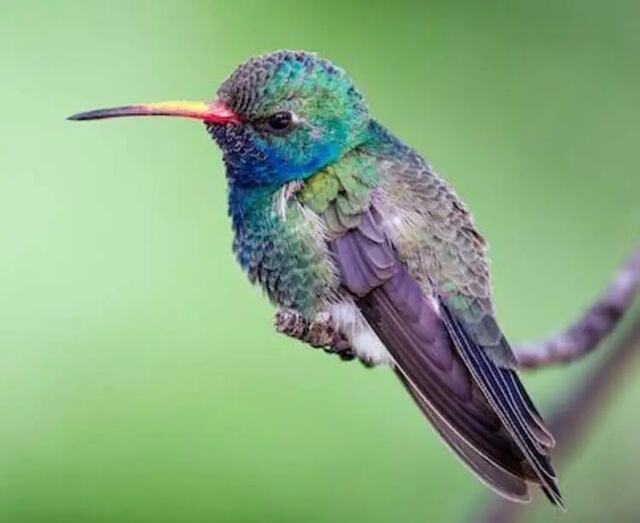
Mapping the Hummingbird Migration Routes
Hummingbirds are remarkable navigators, and scientists have been studying their migration patterns for decades to map their incredible journeys across the United States. Using advanced tracking technology, researchers are able to monitor the movements of hummingbirds as they embark on their annual migrations.
Tracking Hummingbird Migration Routes
One of the primary tools used to track hummingbird migration is geolocators, which use satellites to pinpoint the precise location of the bird’s movements. Additionally, bird banding and radio telemetry have provided valuable insights into the routes and timing of hummingbird migration.
Scientists have mapped the migration routes of several hummingbird species, including the ruby-throated hummingbird, the rufous hummingbird, and the black-chinned hummingbird. These routes vary in distance and direction, but all have one thing in common: they are driven by the need to find the best food sources and breeding grounds.
The Importance of Mapping Hummingbird Migration Routes
Mapping the migration routes of hummingbirds is crucial to understanding their behavior and movements. It provides valuable information on the timing and duration of their journeys, the locations of breeding and wintering habitats, and the impact of environmental changes on their populations. This data is used to develop conservation strategies and protect the habitats and resources that hummingbirds rely on.
Spotting Hummingbirds on Their Migration Routes
If you want to observe hummingbirds on their migration routes, there are several resources available to help you. Check local birding websites and social media groups to find out when and where hummingbirds are passing through your area. You can also attract hummingbirds to your backyard by setting up a hummingbird feeder or planting flowers that are rich in nectar.
Mapping the migration routes of hummingbirds is a fascinating field of study that sheds light on the incredible resilience and adaptability of these tiny creatures. By gaining a better understanding of their movements and behaviors, we can work towards protecting their habitats and ensuring the survival of these remarkable birds for generations to come.
The Season of Hummingbird Migration
Hummingbird migration in the United States is a seasonal occurrence that typically begins in the spring and continues through the fall. During this time, hummingbirds embark on long and strenuous journeys in search of suitable breeding grounds and food sources.
The exact timing of hummingbird migration varies depending on several factors such as changes in daylight hours, temperature, and food availability. In general, hummingbirds in southern regions start their migration in mid-February, while those in northern regions depart in late May or early June.
During their migration, hummingbirds can travel up to 500 miles a day, often stopping to rest and refuel along the way. In the fall, as temperatures begin to drop, hummingbirds migrate back to their wintering grounds in Central or South America.
If you’re interested in spotting hummingbirds during their migration season, it’s important to know when and where to look. In the spring, hummingbirds can be seen in southern regions such as Texas and Florida, while in the fall, they can be spotted in northern regions such as the Northeast and Midwest.
To attract hummingbirds to your garden during migration season, consider planting flowers and shrubs that provide food and shelter. Some popular options include honeysuckle, salvia, and bee balm.
By understanding the season of hummingbird migration, you can plan your birdwatching adventures and appreciate the incredible journey these birds undertake each year.
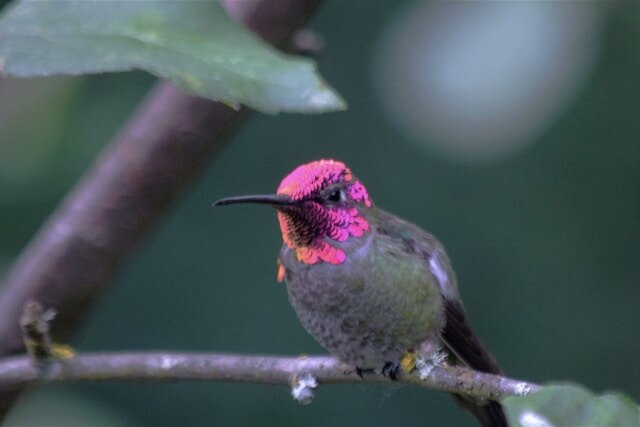
The Impact of Migration on Hummingbirds
Hummingbird migration is a crucial aspect of their survival and plays an essential role in the overall ecosystem. During their journeys, hummingbirds contribute to the pollination of various plants and flowers, helping to maintain the delicate balance of the environment.
Migration also allows hummingbirds to access new breeding grounds, where they can find the resources they need to raise their young successfully. Without migration, hummingbirds would not be able to expand their populations and maintain genetic diversity.
However, hummingbirds face numerous challenges during their migrations, including habitat loss, climate change, and food scarcity. These factors can impact their ability to complete their journeys and, ultimately, their survival.
By studying hummingbird migration, scientists can better understand the threats faced by these birds and work towards developing conservation strategies to protect them. Individuals can also play a role in supporting hummingbird populations by creating suitable habitats and providing food sources for these birds during their migrations.
The Importance of Conservation
Hummingbirds are a vital part of the ecosystem, and their survival is essential for maintaining the delicate balance of the environment. By developing effective conservation strategies, we can ensure that these birds continue to thrive and contribute to the natural world.
Conservation efforts can include habitat restoration, reducing the use of pesticides, planting native flowers to attract hummingbirds, and supporting organizations dedicated to protecting these birds and their habitats.
Whether through scientific research or individual actions, we can all play a role in preserving the wonder of hummingbird migration and the important contributions these birds make to our world.
Uncovering the Wonders of Hummingbird Migration
Hummingbird migration is truly a marvel of nature, showcasing the incredible abilities of these tiny birds. By understanding their migration patterns, we gain insight into their instincts and behaviors, and can work towards conserving their habitats.
During their migration, hummingbirds travel vast distances, crossing regions and habitats that are crucial for their survival. As they journey across the United States, they contribute to the pollination of plants, helping to maintain the balance of ecosystems.
Their migration also plays a vital role in the breeding and survival of future generations. As the birds search for suitable breeding grounds and food sources, they mate and lay eggs, ensuring the continuation of their species.
By studying and mapping their migration routes, researchers gain valuable insights into the behavior and habits of these birds. With this knowledge, we can work towards protecting their habitats, providing safe and suitable environments for them to thrive and continue their remarkable journeys.
In celebrating the remarkable journeys of hummingbirds across the United States, we gain a greater appreciation for the natural world around us. Let us continue to work towards preserving the habitats and ecosystems that make these awe-inspiring journeys possible.
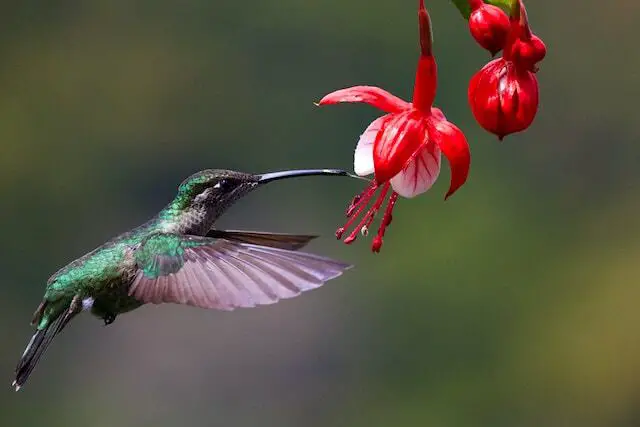
FAQs: Do Hummingbirds Migrate?
What triggers hummingbird migration patterns?
Several factors, including changes in environmental conditions, the search for suitable breeding grounds, and food availability, trigger hummingbird migration patterns.
When do hummingbirds migrate?
Hummingbirds migrate during different seasons, which vary across different regions. The timing of their departure and arrival is influenced by various factors.
Why do hummingbirds migrate?
Hummingbirds migrate for several reasons, including the search for suitable breeding grounds, food availability, and changes in environmental conditions. These migrations are driven by their incredible instincts.
How far do hummingbirds migrate?
Despite their small size, hummingbirds cover impressive distances during migration. The average distances they travel during their annual journeys are remarkable.
Do all hummingbirds migrate?
While many hummingbird species migrate, not all of them do. There are different types of hummingbirds found in the United States, exhibiting both long-distance migrations and localized movements.
Do ruby-throated hummingbirds migrate?
Yes, ruby-throated hummingbirds are known for their impressive migration. They undertake remarkable journeys, following specific migration routes and facing various challenges along the way.
How are hummingbird migration routes mapped?
Scientists have been studying and mapping hummingbird migration routes for years. They use tools to track and monitor their movements, gaining valuable insights into their migration patterns.
What is the hummingbird migration season?
Hummingbird migration occurs over a span of months, with different phases and regions. Understanding the hummingbird migration season helps in spotting them and attracting them to gardens.
What is the impact of migration on hummingbirds?
Hummingbird migration plays a vital role in their survival and contributes to the overall ecosystem. Their journeys affect plants and habitats, showcasing the interconnectedness of nature.
Why should we appreciate hummingbird migration?
Hummingbird migration is a remarkable phenomenon that showcases the incredible capabilities of these tiny birds. Understanding their migration patterns helps in conserving their habitats and appreciating nature’s wonders.

